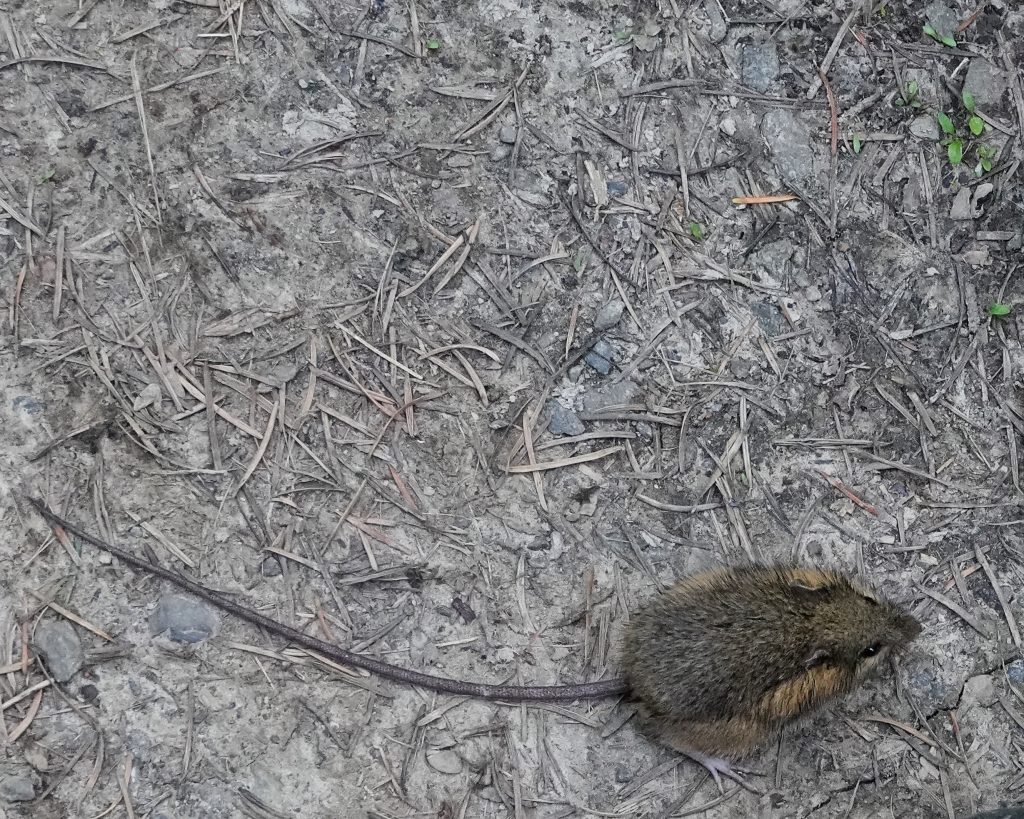
I have to admit that, because they are often nocturnal and shy, I know very little about the small mammals of our region. A general ‘it’s a vole’ or ‘it’s a shrew’, is about as far as I can go, and my interest level isn’t high because I so seldom see the little critters. So when Pam said ‘Honey look’ as we were walking along the Cape Horn trail, my first thought was not that I’d see a rodent. And when I did stop and peer forward, I at first thought it was probably some sort of deer mouse. I was trying to track it with my camera as it scurried toward me, and managed one poor shot, but then it stopped right next to my foot. That was when I saw the long hind feet, and the very long tail, and I wondered in my ignorance if it was a kangaroo rat. It stayed there at least ten seconds, long enough for several very similar pictures, and calmly enough that I tried to get a better photographic angle, but as soon as I shifted it shot off into the under brush.
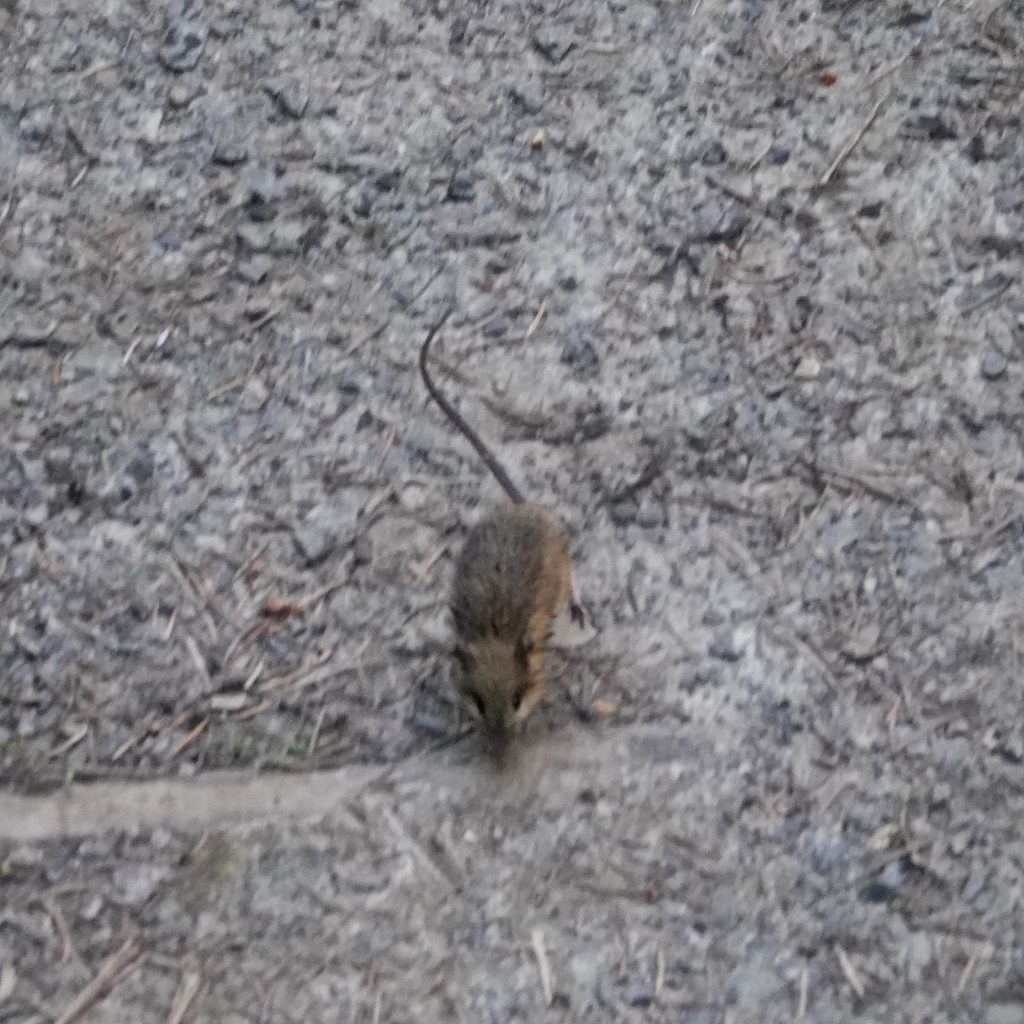
As soon as we got home I started combing through my mammal books, and got lucky because there are only a couple little rodents with fairly hairless tails that long, both of them are jumping mice, and only the Pacific Jumping Mouse is found in the Columbia River Gorge. It’s rather embarrassing to admit, but I had no idea we had such creatures as jumping mice! And they can really jump, reaching a height of 4’! But they usually only jump when threatened, and the one Pam and I saw just scurried like a mouse. The extra long tail helps them to keep their balance during those leaps so that they can land on their feet. They also drum it against the ground when agitated.
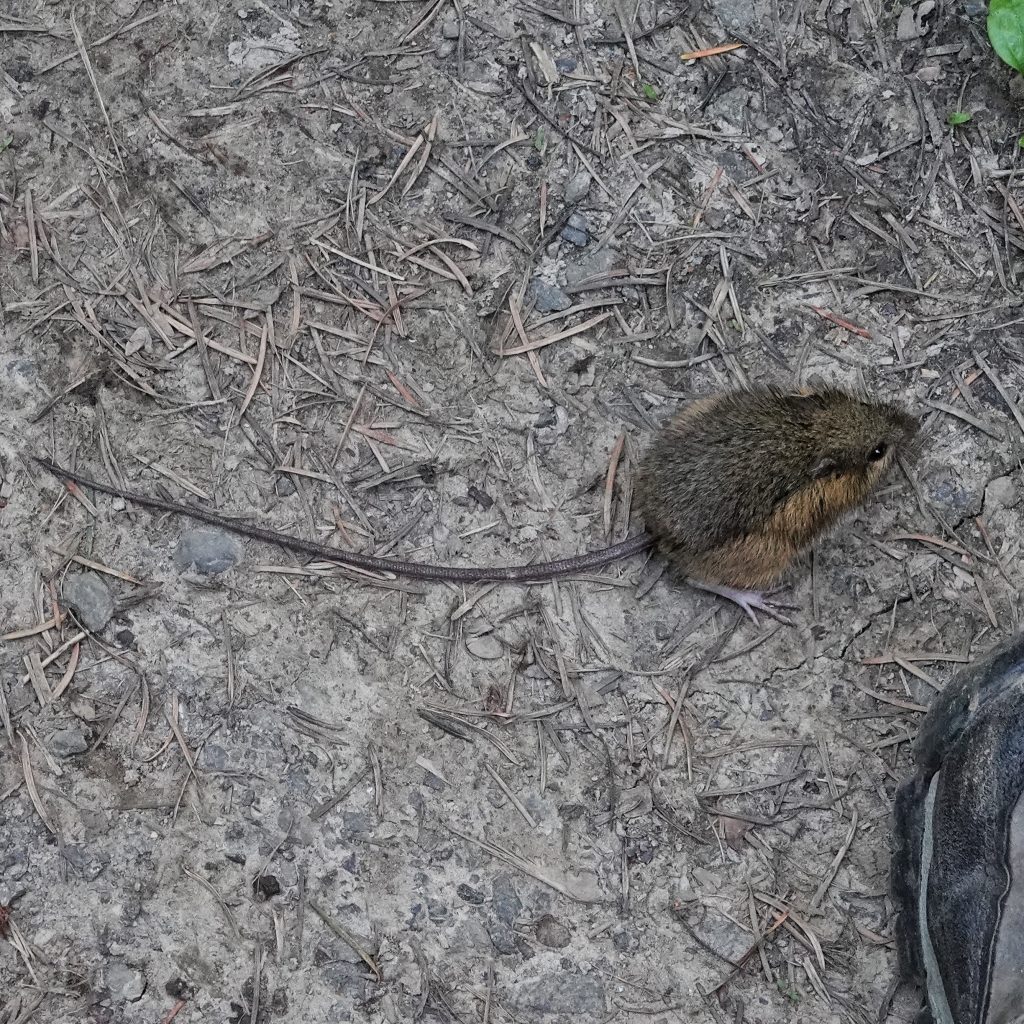
Description-Medium sized (body length 3-5”) mouse with very large hind feet, and a very long tail (often twice or more the length of the body); back is dark brown flecked with black, sides are gold to ochre, belly and chest are cream to white; tail is bicolored, sparsely haired, and scaly.
Similar species–Zapus princeps tends to be lighter colored overall, less distinctly tri-colored, and is usually found east of the Cascades; Peromyscus crinitus (Canyon Mouse) is uniformly colored above the belly and chest, and lives in Oregon, east of the Cascades; other mice have much shorter tails in relation to their body; kangaroo rats (Dipodomys) have bushy tail tip.
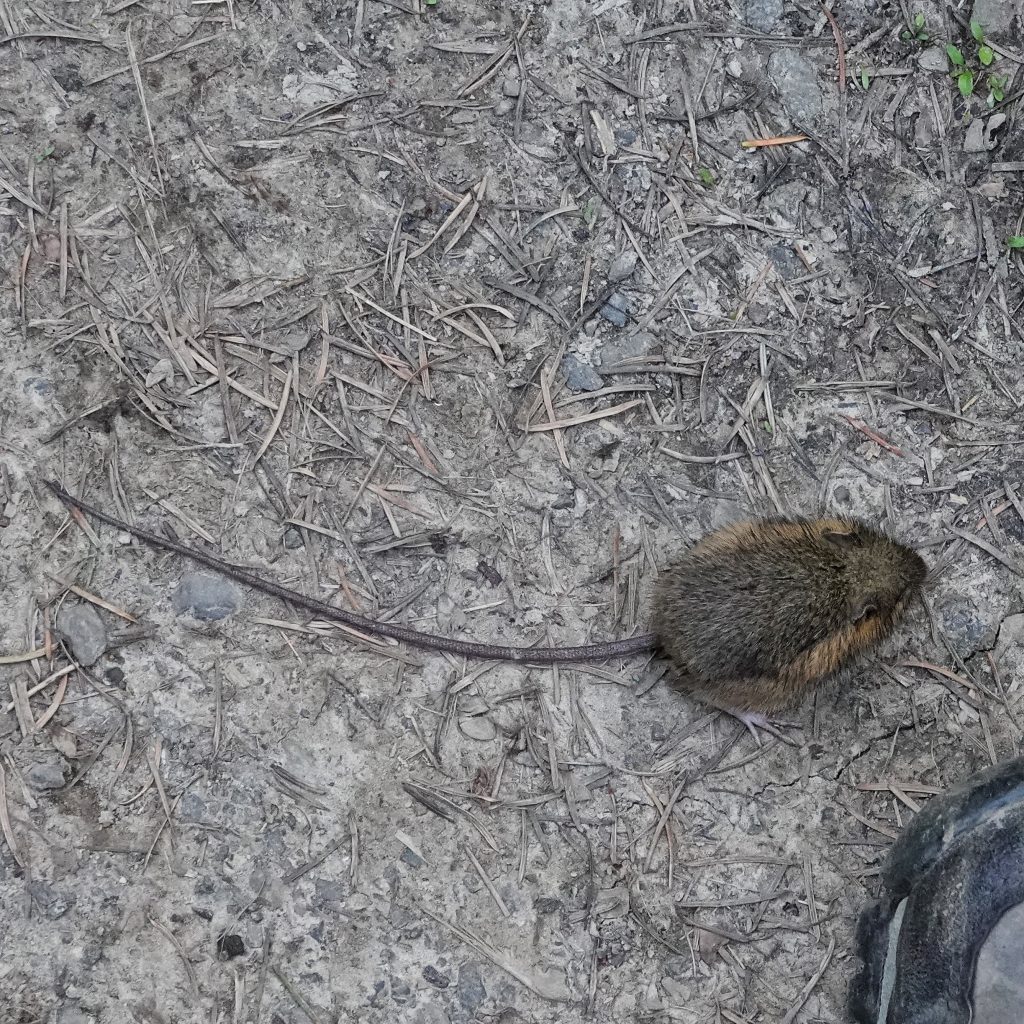
Habitat-Dense vegetation and damp meadows and fields in forests and woodlands, often near streams and wetlands, up to alpine elevations; strongly associated with skunk cabbage and salmonberries
Range-West Coast North America; found from the Cascades to the Pacific in our region, as well as in sw Oregon and nw California.
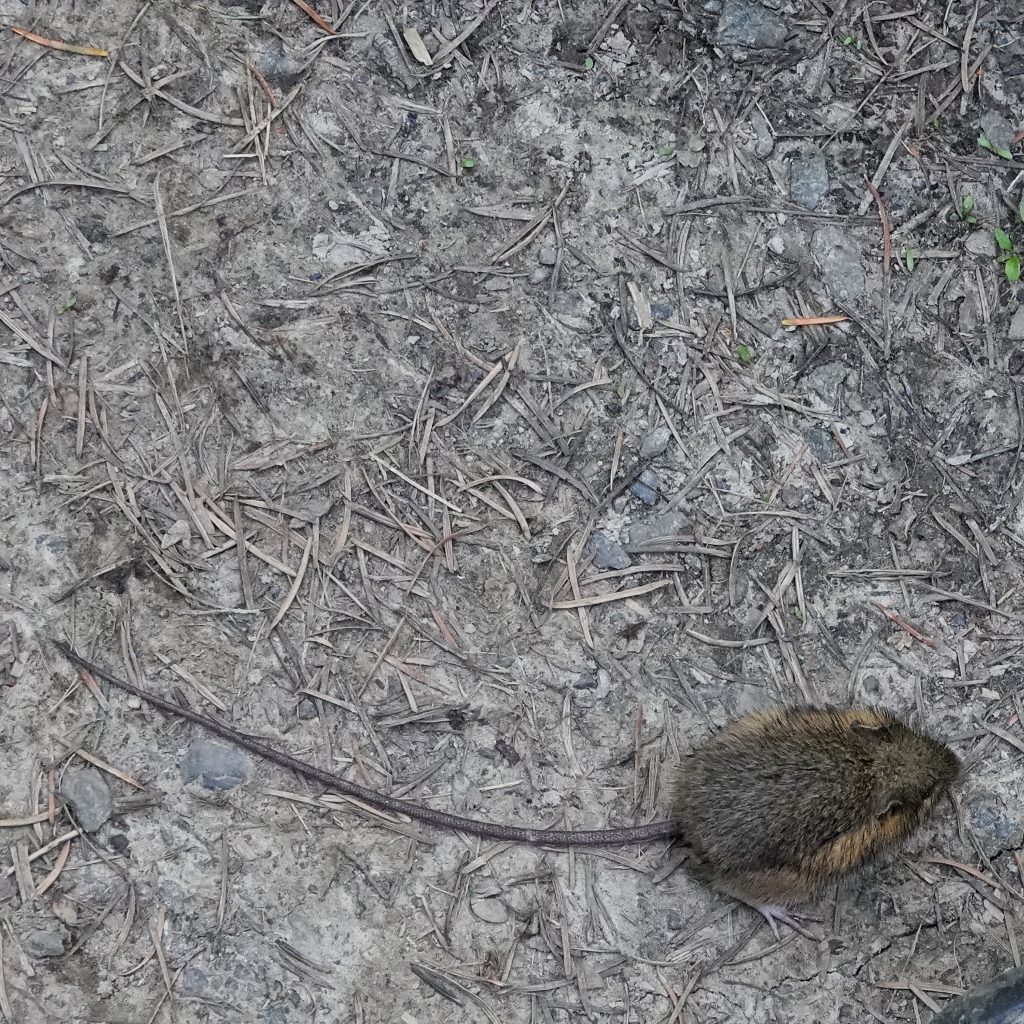
Eats-Fungi, grass seeds (according to some sources this is their primary foodstuff, which they utilize by clipping the stem and then eating the seeds), tender vegetation, seeds of skunk cabbage, salmonberries and other berries, insects and other arthropods.
Eaten by-Coyotes, foxes, bobcats, house cats, skunks, hawks, owls, and snakes, amongst others, and because it is a good swimmer willing to cross bodies of water, large fish (mostly bass and brown trout)
Adults active– Generally nocturnal ; late April into October; unlike most mice they hibernate the rest of the year in a nest made of shredded vegetation in an underground burrow; they are cued to leave their hibernation chamber by a certain level of ground temperature, and all of the Pacific Jumping Mice in a given area emerge from hibernation at the same time.
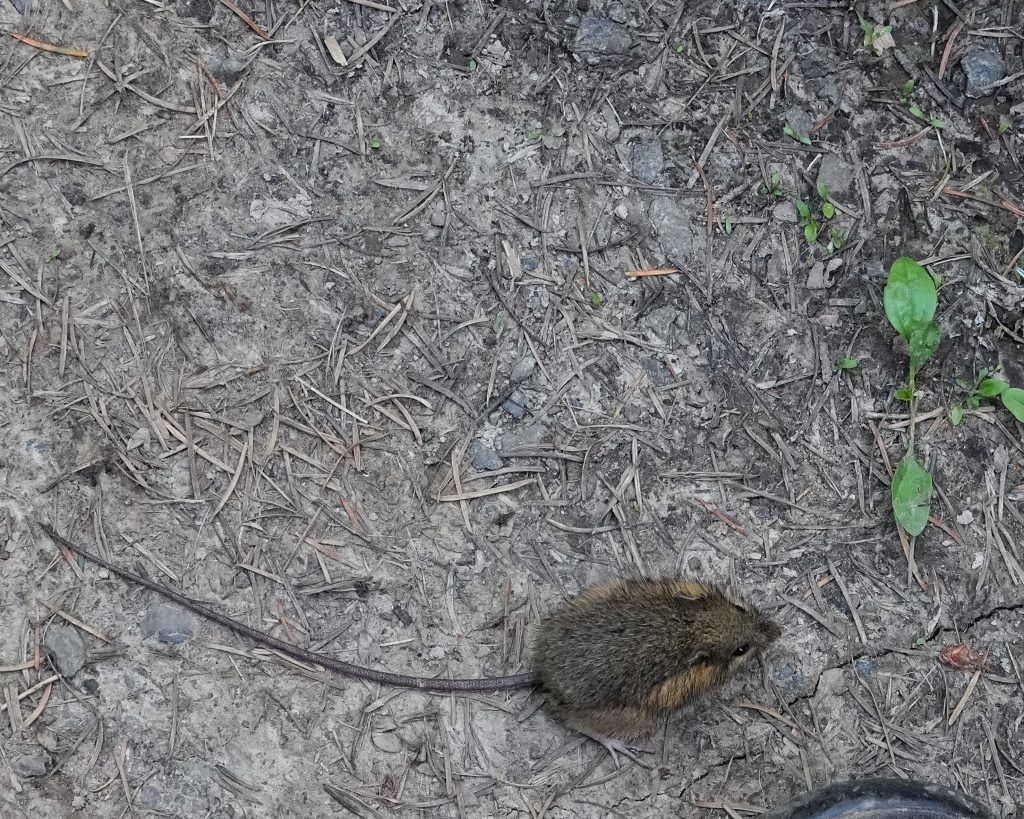
Life cycle-Breeds from May to early September ; builds an above ground but concealed nest of grasses or moss that is domed with a single entrance, and is 9-10” tall; gestation is around 18 days; has 4-8 (usually 5) young; weaned at about a month, may be double brooded in good conditions; sexually mature the spring following their birth.
Etymology of names–Zapus is from the Greek and basically means ‘quite the feet!’ or ‘very foot-y’, referring to the large hind feet. The specific epithet trinotatus is from the Latin for ‘3 marked’, and refers to the back, sides, and belly being different colors.
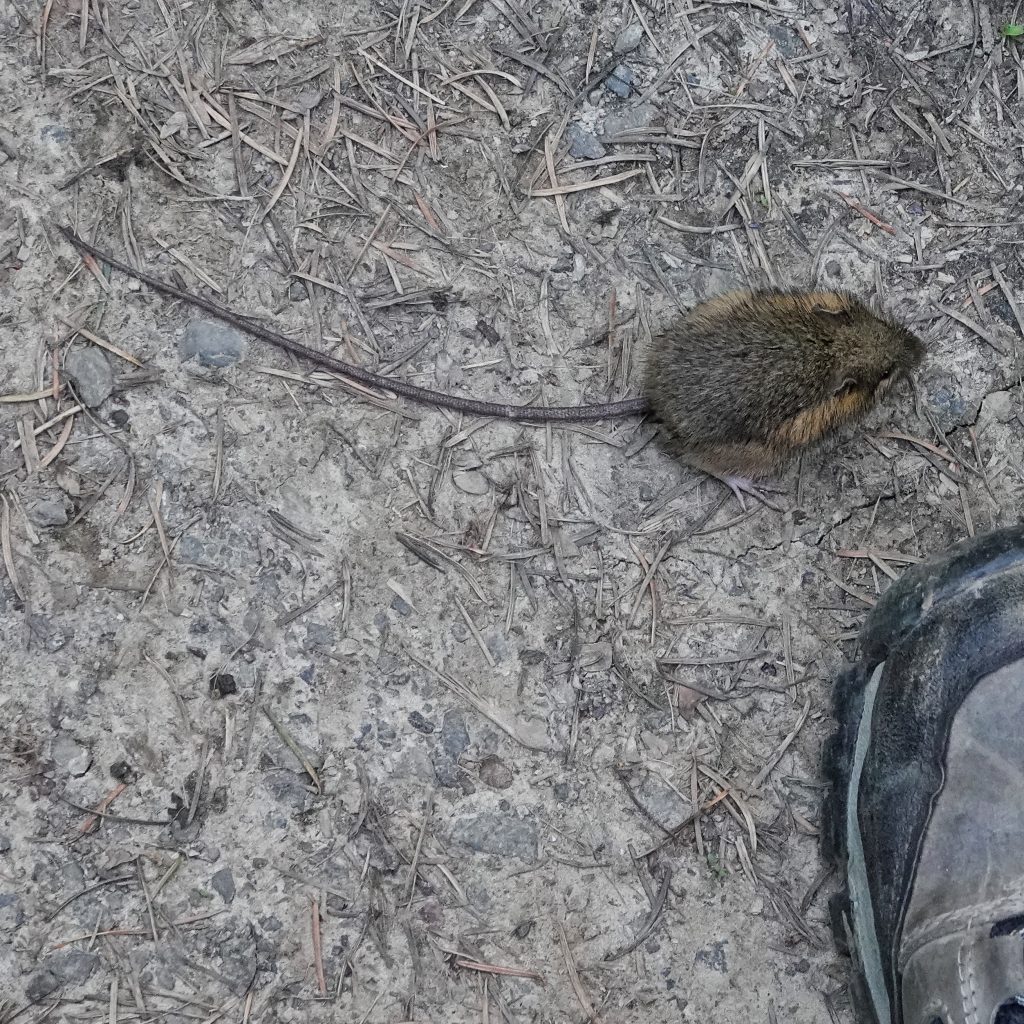
http://sibr.com/mammals/M144.html
https://animaldiversity.org/accounts/Zapus_trinotatus/
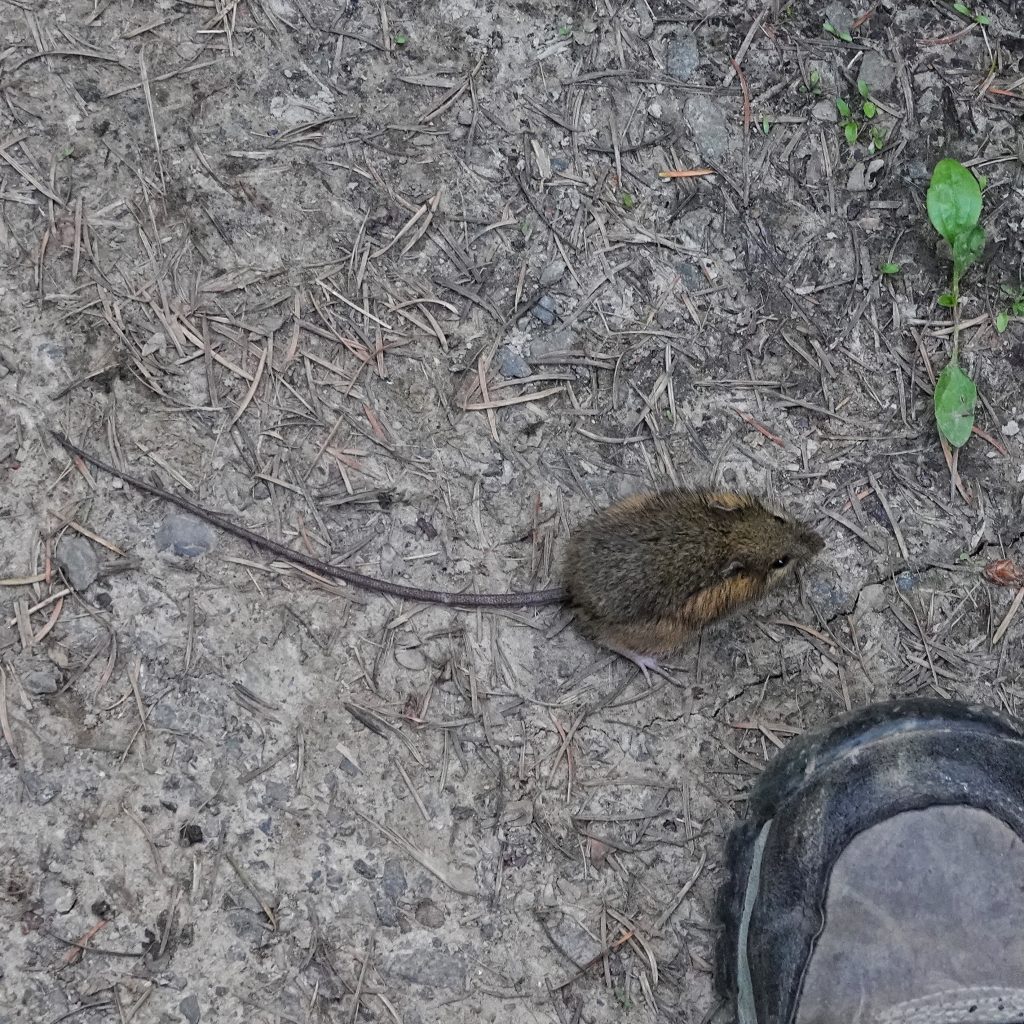
I had no idea that jumping mice hibernated. We have Z princeps here in the valley, so now I know why I only ever see them in the warmer months.
Sounds like you encounter them regularly. That’s cool! How often do you see them jump?
I had the craziest night where I kept hearing scurrying accompanied by small squeaking sounds and of course my cat was in a frenzy! Since my doors have a small opening on the bottom anything could get through – especially a small jumping mouse! I woke up once to hear my cat was jumping and scurrying after something. Not thinking much of it, I went back to bed, but the second time I woke up I was wondering why she was still the same! Checked closer at what she was trying to catch and I realized it was a small tiny mouse that keep jumping away from her almost like a cricket! What she’d been doing all night was catching then releasing, as if playing with it! The little critter was so worn out and on the edge of dying so I took it out with a paper towel and plopped it outside. It doesn’t look in great shape but he’s away from that mean cat if mine and is now resting in the bushes. My cat on the other hand…is not happy I took her only form of entertainment for the night! 😂
Very interesting, Sarina! Bummer for the mouse, but probably learned a lesson about going into folks homes. Thanks for sharing that with us, and for saving the mouse!